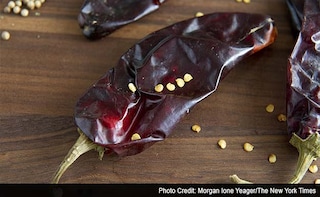If you like to make chili and don't live in Texas, consider yourself lucky. Passions run high in that state over pressing issues like what brand of canned tomatoes to use (if any), how much cumin is too much and whether browning the meat is authentic. Don't get them started on garnishes.
Advertisement
Advertisement
Advertisement
Advertisement
For the latest food news, health tips and recipes, like us on Facebook or follow us on Twitter and YouTube.
Advertisement
